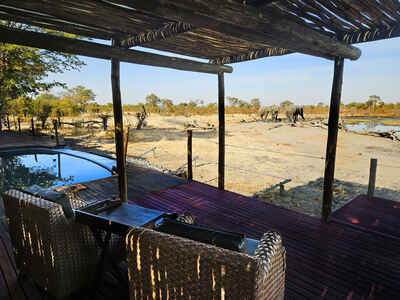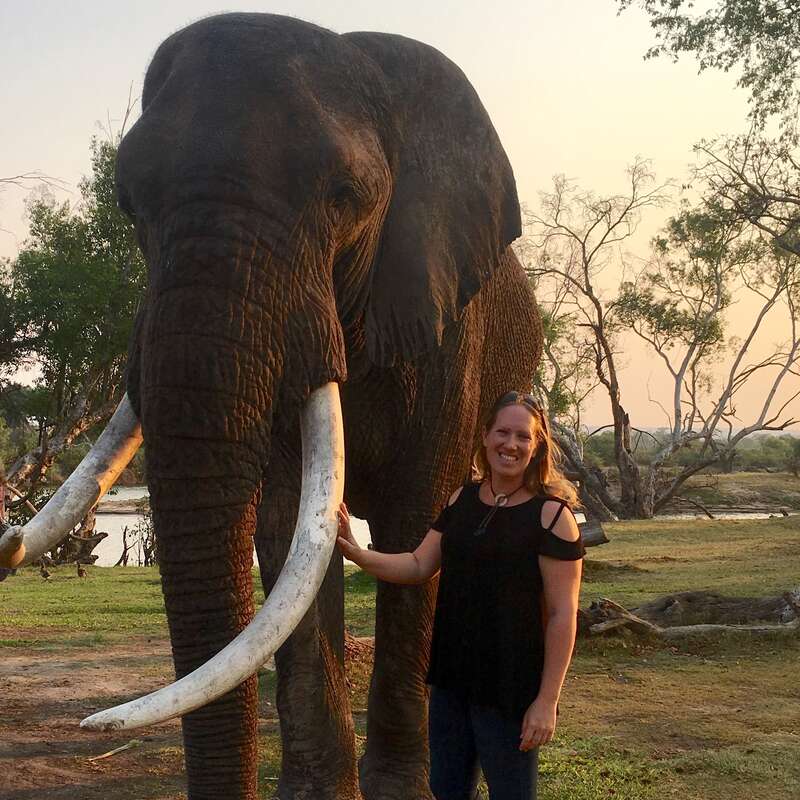About Camp Kuzuma
Camp Kuzuma sits just inside the northern boundary of the Kuzuma Forest Reserve, very close to Botswana’s ...
... border with Zimbabwe and Hwange National Park. No one from Expert Africa has stayed at Camp Kuzuma yet, but we did drop in to take a look around during a recent research trip and we were impressed with what we found.
No one from Expert Africa has stayed at Camp Kuzuma yet but we did pay it a brief visit not long after it had opened. We found a stylish camp, off the beaten track, where game drives and nature walks take place in a private concession inside the Kazuma Forest Reserve. This area is well known for elephant’s as well as other big game and wildlife is frequently viewed drinking form the waterhole in front of camp. Although Camp Kuzuma is about a two-hour drive away from the Chobe riverfront, we’d consider it a good alternative for those travellers who wish to spend a day in Chobe National Park, but who would prefer to spend the remainder of their time in a less busy area of northern Botswana.
Our view
No one from Expert Africa has stayed at Camp Kuzuma yet but we did pay it a brief visit not long after it had opened. We found a stylish camp, off the beaten track, where game drives and nature walks take place in a private concession inside the Kazuma Forest Reserve. This area is well known for elephant’s as well as other big game and wildlife is frequently viewed drinking form the waterhole in front of camp. Although Camp Kuzuma is about a two-hour drive away from the Chobe riverfront, we’d consider it a good alternative for those travellers who wish to spend a day in Chobe National Park, but who would prefer to spend the remainder of their time in a less busy area of northern Botswana.
Accommodation
5 Tented Suites
Children
Best for aged 10+
Open
All year
Activities

4WD Safari

Birdwatching

Boat trip

Guided walking safari

Private activities
Traveller reviews of Camp Kuzuma
2 real, un-edited reviews from Expert Africa's travellers.
Arrived 12 Sep 2023, 4 nights
"Camp Kuzuma review"
Overall rating: Excellent
Arrived 15 Aug 2022, 3 nights
"Camp Kuzuma review"
Overall rating: Excellent
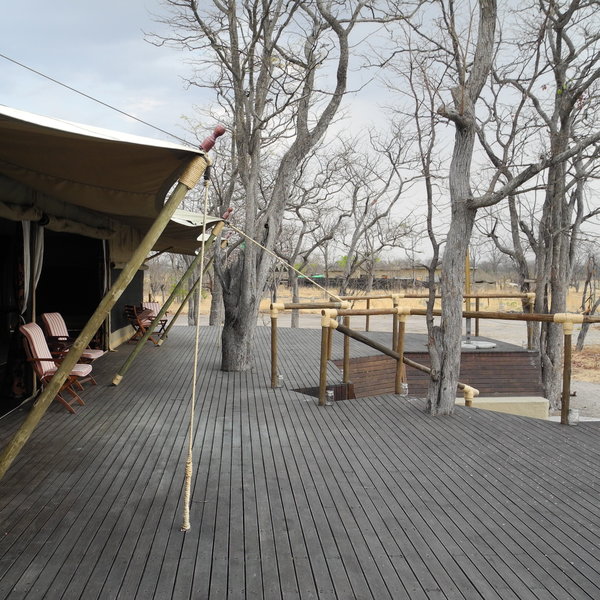
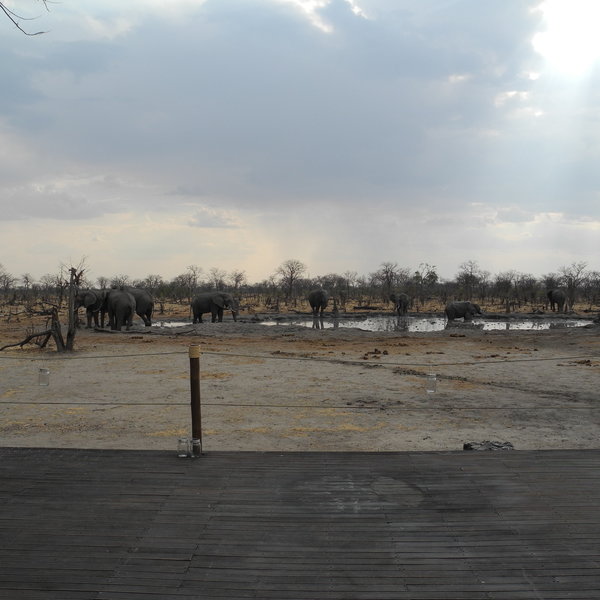
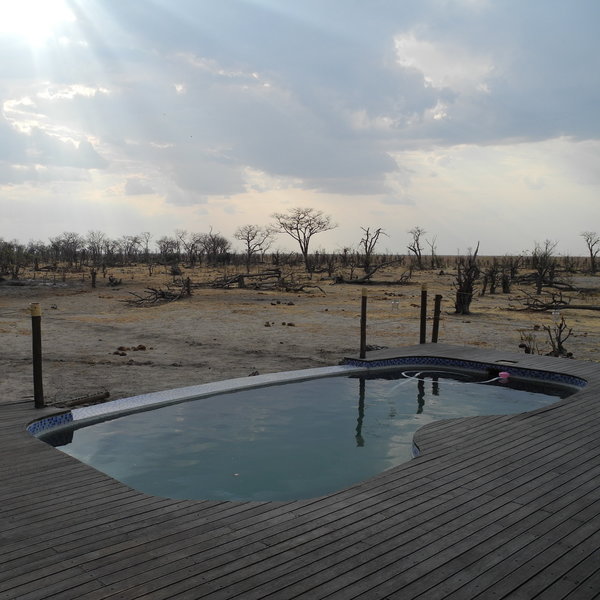
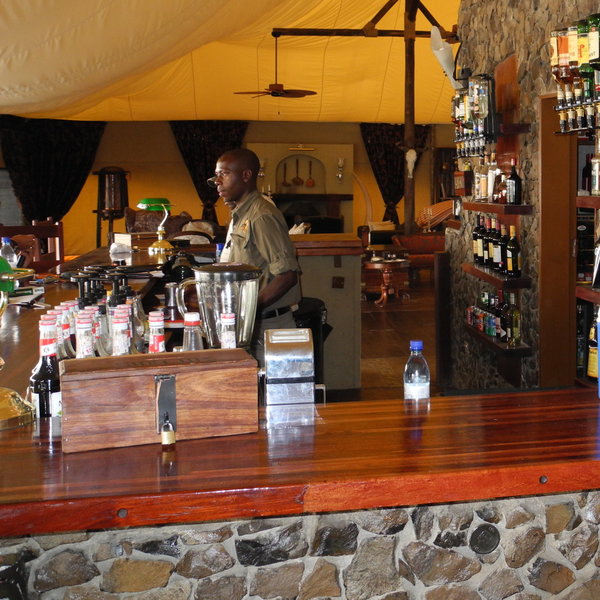
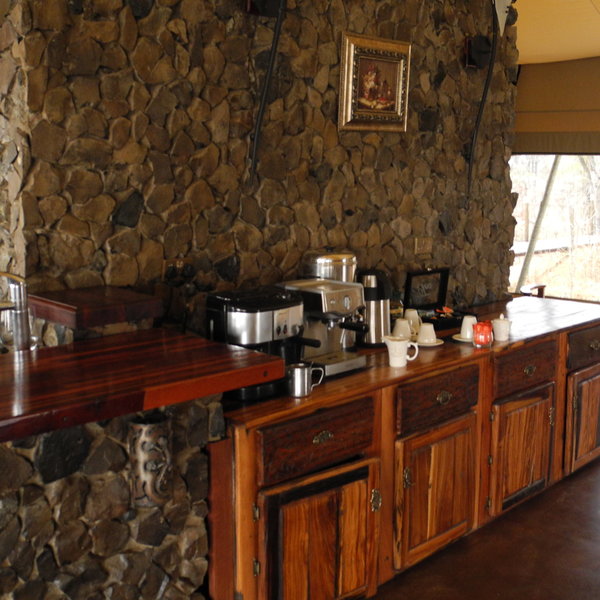
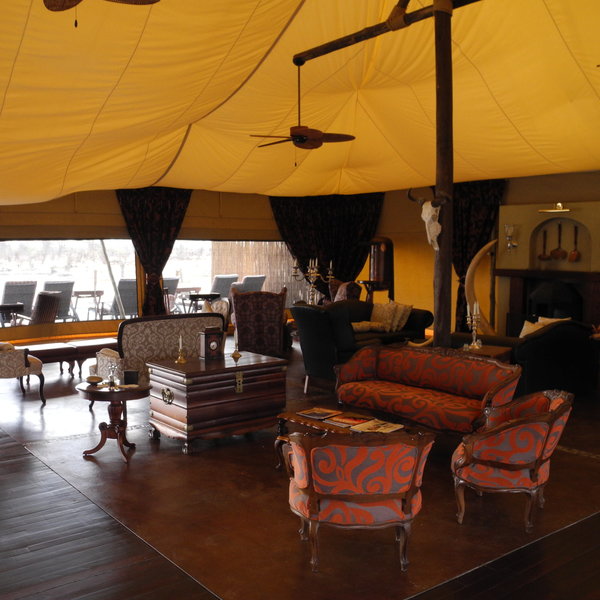
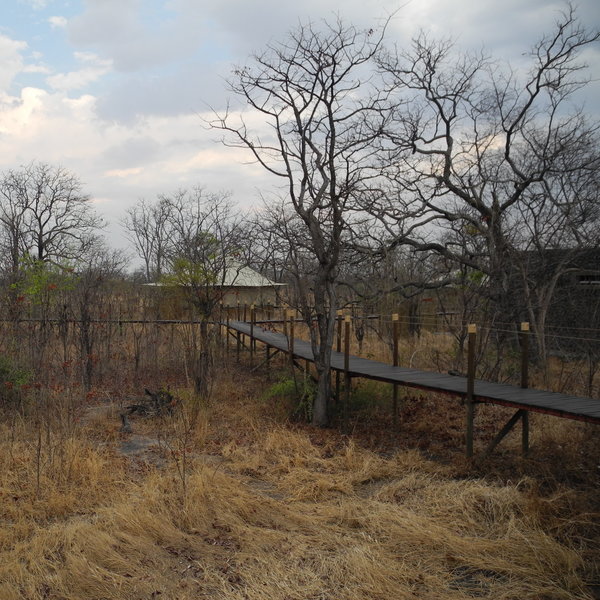
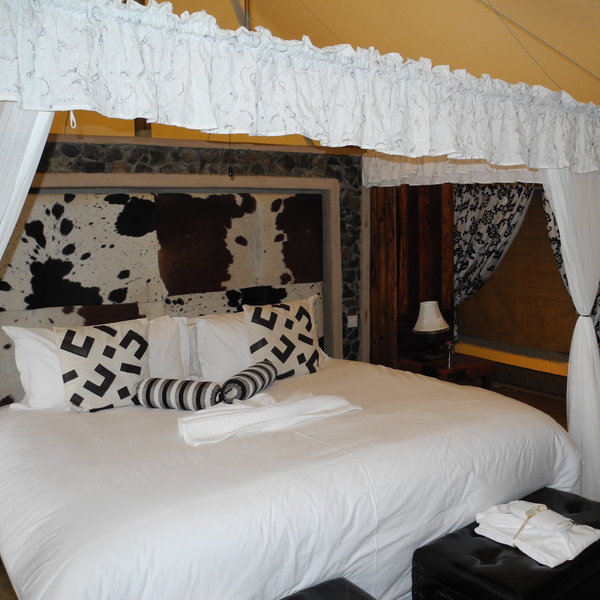
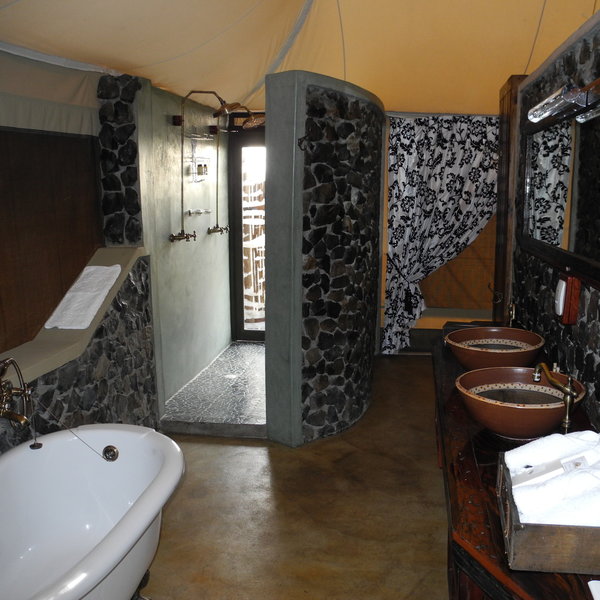
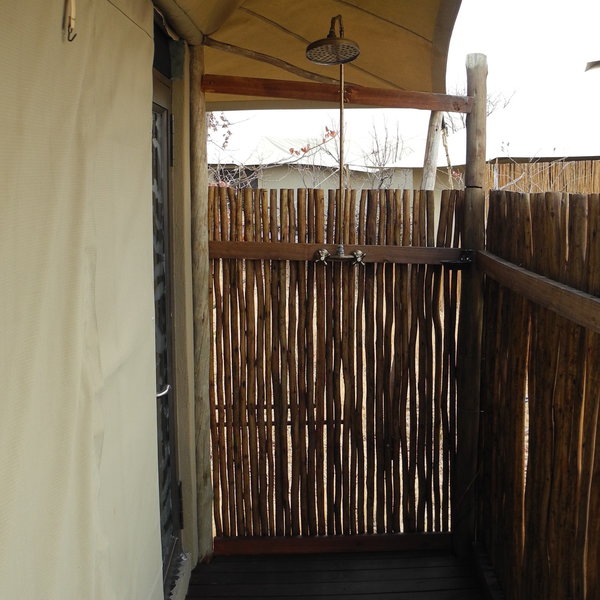
Expert Africa's gallery
When we travel we take lots of photos ourselves to give you a real and un-edited view of the safaris. See our 12 pictures of Camp Kuzuma to get the candid view.
View galleryCamp Kuzuma: Our full report
Camp Kuzuma sits just inside the northern boundary of the Kuzuma Forest Reserve, very close to Botswana’s ...
... border with Zimbabwe and Hwange National Park. No one from Expert Africa has stayed at Camp Kuzuma yet, but we did drop in to take a look around during a recent research trip and we were impressed with what we found.
Overlooking a waterhole, Camp Kuzuma sits in the path of an elephant corridor linking Chobe and Hwange National Parks. This makes it a fantastic place to see elephant, particularly in the drier winter months (July – October). Camp Kuzuma has access to its own 20,000-hectare private concession and is in stark contrast to the other accommodation options in this area, looking more like a lodge one might find in the Okavango Delta rather than on the relatively unknown Kazuma Pans. For guests looking for something a little quieter than the busier Chobe waterfront this should be a good alternative option, albeit a little more out of the way (Camp Kazuma is about a two-hour drive from the town of Kasane, considered the gateway to Chobe National Park).
The whole camp is raised up on wooden platforms and walkways with a total of 5 tented suites all well spaced out form one another and decorated in an Edwardian style found in the Africa of old. Campaign furniture as well as a few ornaments here and there add to this classic feel. Each suite has a king-size bed as its centrepiece; these can also be converted into twins if desired. The concrete floors in each suite will no doubt get quite cold when the temperature drops. Having a few antelope skins and rugs dotted around to lend warmth to each room counteracts this well.
An overhead fan provides respite from the heat during the day but do bear in mind there is no air-conditioning at Camp Kuzuma. The mesh walls of each room open up from ceiling to floor and so the whole suite can effectively be made open-air – a feature many will be grateful for when relaxing in the afternoons in the hotter months. Conversely, canvas flaps can be rolled down to cover the mesh when the wind picks up or the temperature drops.
The en-suite bathrooms include a freestanding bath tub, his and hers indoor showers and an outdoor shower too, complete with views onto the surrounding bush. His and hers ceramic basins are decorated in local patterns and there are complimentary shower gels, shampoos and soaps provided in each bathroom too. A hair dryer is provided too. To the side of the bathroom, in its own separate cubicle is the flush-toilet.
Camp Kuzuma’s main area overlooks the floodlit waterhole. When we visited the camp had no guests and humans were outnumbered by elephant, most having come down to the water to escape the early afternoon heat. In addition to elephant we’re also told that the water hole attracts lion, wild dog and the occasional leopard as well as a variety of antelope, including roan and sable.
The main area has a canvas ceiling with a thatched roof forming an upper shell. The flowing canvas inside the main area gives it an airy feel and this is complimented by its design, with an open-plan (and impressively well-stocked) island bar surrounded by a few comfortable seating areas aswell as dining tables. It all feels very spacious and with nice touches like a couple of coffee machines, quite luxurious too.
In front of the main area is the camp’s swimming pool and deck. On clear evenings guests can sit with their guide and enjoy a spot of star-gazing while waiting to see if anything comes down for an evening drink at the waterhole. Just to the side of this decked area is a ground level boma where humans care welcome to have a drink, pre- or post-dinner. A fire is lit every evening and welcomes guests back from their evening game drive.
Activities at Camp Kuzuma focus on 4WD game drives and guided walks, all conducted by fully proficient guides and trackers. We didn’t have time to experience the quality of the guiding at Camp Kuzuma when we visited but from what we understand the camp offers morning and afternoon game drives in 9 seater Land Rovers, each taking a maximum of six people so everyone gets a ‘window seat’. An armed guide and back up scout accompanies all walks in the Forest Reserve and this is a great chance to experience the smaller things which are missed from the back of a vehicle. The area around Camp Kuzuma is reportedly also quite productive for bird watching too.
In addition to the standard activities on offer at Camp Kuzuma, many guests may also wish to unwind at the camps dedicated ‘bush spa’. The spa room is situated close to the main area with views across the watering hole. A wide range of massages, reflexology, aromatherapy as well as facials and hand and foot treatments are all on offer from professionally trained staff. The spa also has a Jacuzzi.
Away from camp there’s the option for guests to request sunset cruises and day trips to the Chobe National Park. Day-trips to the Victoria Falls can also be arranged too.
Activities
4WD Safari
Birdwatching
Boat trip
Guided walking safari
Private activities
Families & children
- Attitude towards children
- No children under 4 years old are permitted at Camp Kuzuma and private activities have to be booked for groups with children younger than 6.
- Property’s age restrictions
- No under 4’s
- Special activities & services
- None
- Equipment
- None
- Generally recommended for children
- This is an open safari camp with big game frequently passing through. In addition to the risk from game the whole camp is also elevated off the ground and so there are hazards there too. The swimming pool is also unfenced. Children need to be supervised at all times.
Food & drink
- Usual board basis
- Full Board & Activities
- Food quality
- When we visited Camp Kuzuma we dropped in somewhat unannounced and so, understandably we didn’t get a chance to experience the menu here. From our own desk research and from speaking with the camp itself we would expect the dining experience here to be of a very high quality though.
As is the norm with safari camps in Botswana, the day will revolve primarily around two main meals – brunch, and dinner but with the gaps all filled in with sizeable snacks so that you will never go hungry.
Guests will wake up early, usually around 5 or 6 am depending on the time of year.
A light breakfast is served at the main area before the first game drive, not long after first light and this will include cereal, toast, home made rusks or muffins and preserves with coffee and tea on offer too.
On return from the morning game drive brunch will be waiting to be served, usually in the dining area or next to the pool. This takes place around 9:30 and at this point you’ll be able to enjoy a cooked breakfast accompanied by a range of fruit, yogurts and again toast and muffins served with a selection of fruit juices and fresh tea and coffee.
After a few hours to relax and digest, the next snack comes at afternoon tea when a selection of sweet and savoury options are served before the evening game drive.
The evening meal is served on return from the game drive and this is a three-course, sit down affair. Again, we haven't been lucky enough to sample the food at Camp Kuzuma, but from our research and the photo galleries we’ve seen, it looks to be of a very high quality indeed. - Dining style
- Individual Tables
- Dining locations
- Indoor and Outdoor Dining
- Drinks included
- All drinks are included in a stay at Camp Kuzuma including local (South African) wines and beers. Champagne and premium brand sprits are not included.
Our travellers’ wildlife sightings from Camp Kuzuma
Since mid-2018, many of our travellers who stayed at Camp Kuzuma have kindly recorded their wildlife sightings and shared them with us. The results are below. Click an animal to see more, and here to see more on our methodology.

100% success

100% success

100% success

100% success

100% success

100% success

100% success

100% success

100% success

100% success

50% success

50% success

0% success

0% success

0% success

0% success

0% success

0% success
Getting there
- Location
- Chobe National Park, Botswana
- Ideal length of stay
- We’d recommend a stay of two or three-nights at Camp Kuzuma. It’s a fair drive from Kasane and having at least one full day here is essential, preferably two.
- Directions
- Most guests staying at Camp Kuzuma fly into Kasane and then transfer down to camp by road. This road transfer takes about an hour and a half.
- Accessible by
- Fly-and-Transfer
Communications
- Power supply notes
- There is a back up generator available should it be needed.
- Communications
- There is no cell phone reception or WiFi at Camp Kuzuma.
- TV & radio
- There is no TV or radio at Camp Kuzuma.
- Water supply
- Borehole
- Water supply notes
- Borehole water is available for washing in and bottled water is supplied for drinking water.
Health & safety
- Malarial protection recommended
- Yes
- Medical care
- The nearest doctor is in Kasane or Pandamatenga but the guides are all first aid-trained and for anything serious and urgent medical air rescue is on standby. Please note that it is only possible to fly out of camp during daylight hours as the bush airstrips do not have any lighting at night.
- Dangerous animals
- High Risk
- Security measures
- Security guards patrol the camp at night.
- Fire safety
- There are fire extinguishers dotted around camp.
Useful info
- Disabled access
- Not Possible
- Laundry facilities
- Laundry is included in a stay at Camp Kuzuma.
- Money
- Each room has its own electronic safe. The lodge does not offer exchange facilities.
- Accepted payment on location
- The lodge can accept credit and debit cards but not Amex.
Plan and book your trip with Expert Africa
All of our trips are tailor-made, so we'll always adapt them to suit you. Talk to an Expert and let us plan and arrange your perfect trip.

Talk to an Expert
Call or email us now! We’ll match you with the Specialist in our team who is best suited to help you. Then together we can start planning your trip.

Set up your itinerary
Based on our experience and your ideas, your specialist will create a detailed, costed itinerary. We’ll refine it together, until we have a trip that you’re perfectly happy with.

Prepare for your trip
The same Specialist will make the seamless arrangements for your trip, send you detailed travel documents, and be available to answer any questions before you depart.

Travel with peace of mind
After you set off, you’ll be cared for by our partners in Africa, most of whom have worked with Expert Africa for decades. And if you ever need us urgently, we’re available 24/7.

When you return
We love to learn about your trip, and so will always be grateful if you’ve the time to give feedback to your Specialist when you return.
Camp Kuzuma's location
Look closer at the environment and surroundings of Camp Kuzuma.
Excursions from Camp Kuzuma
Optional extra day-trips and excursions possible whilst you're staying at Camp Kuzuma. Talk to us: these are usually best arranged before you go.
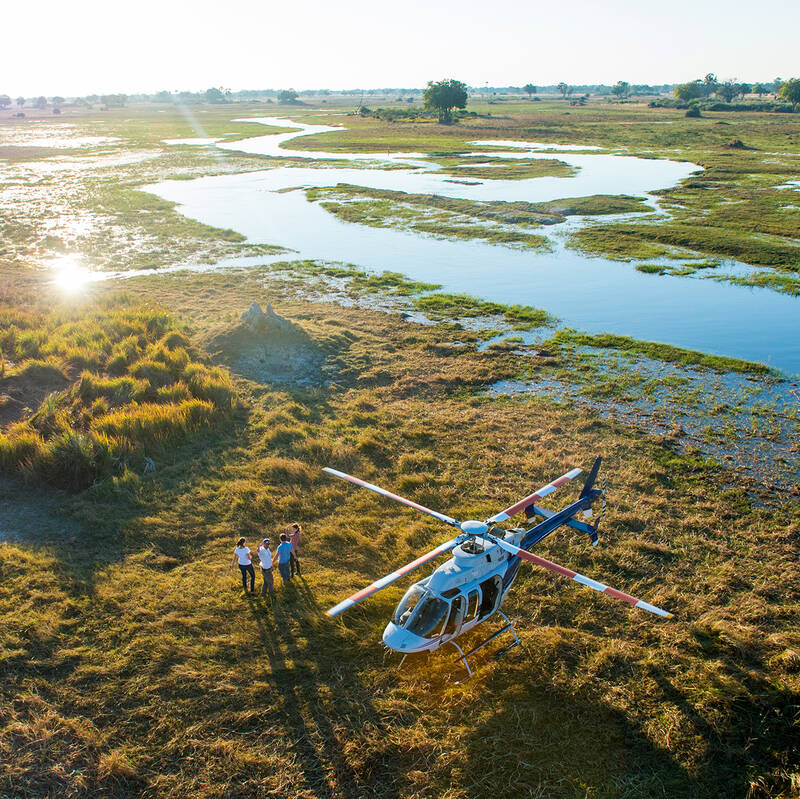
Helicopter Flight - Botswana
Various: from 30 minutes to half a day.
Low-flying, agile and offering superb views, helicopters are an ideal way to move around the Okavango Delta.You can use them instead of fixed-wing inter-lodge transfers or as an addition to other wildlife watching activities, and of course, helicopters can hover to allow that perfect pic, whereas fixed-wings can’t.
More about Helicopter FlightOther lodges in Chobe National Park
Alternative places to stay in this same area.
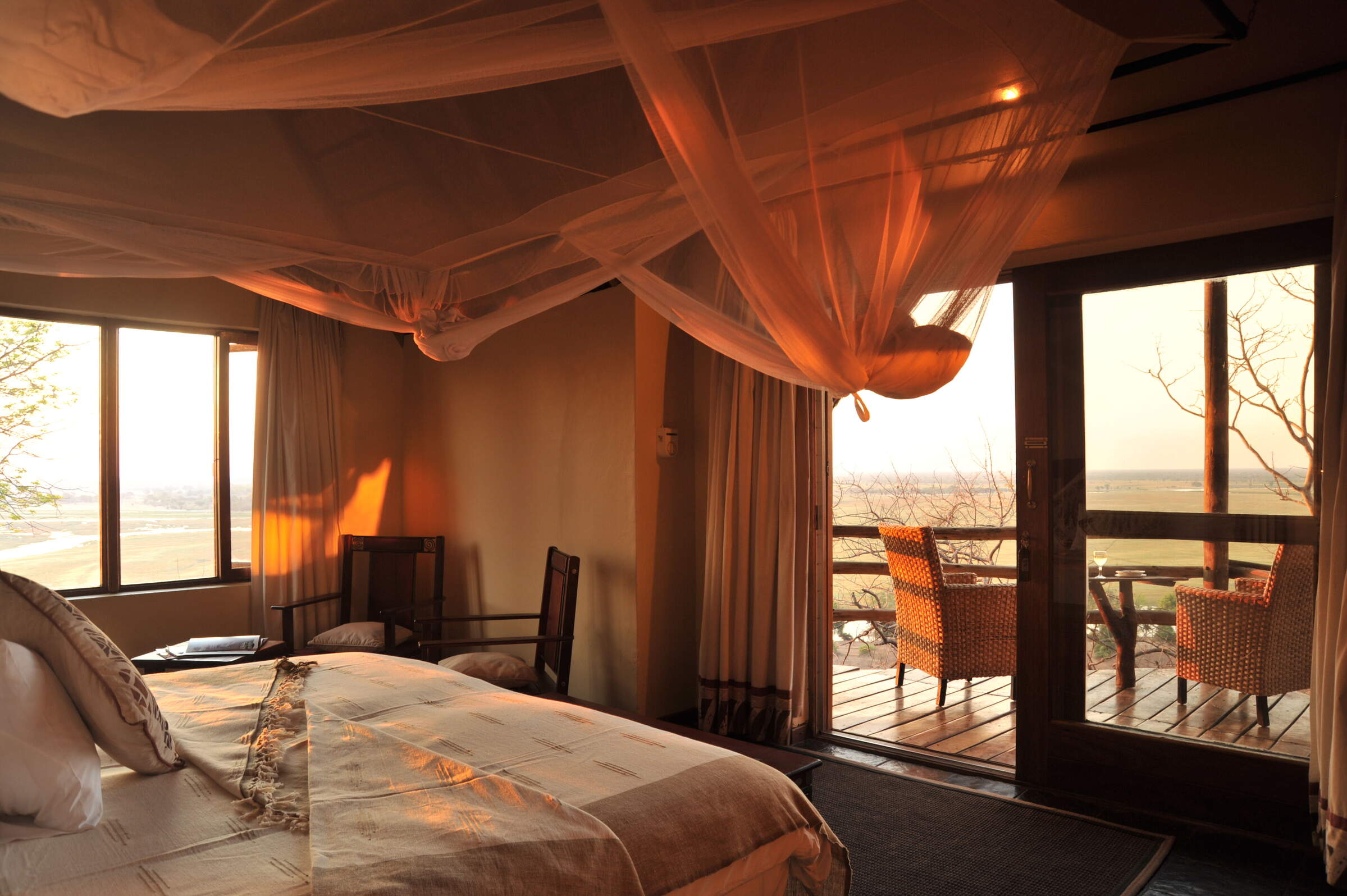
Muchenje Safari Lodge
One of our favourites in the area, Muchenje is a small, welcoming lodge at the quieter, western end of the Chobe Riverfront.
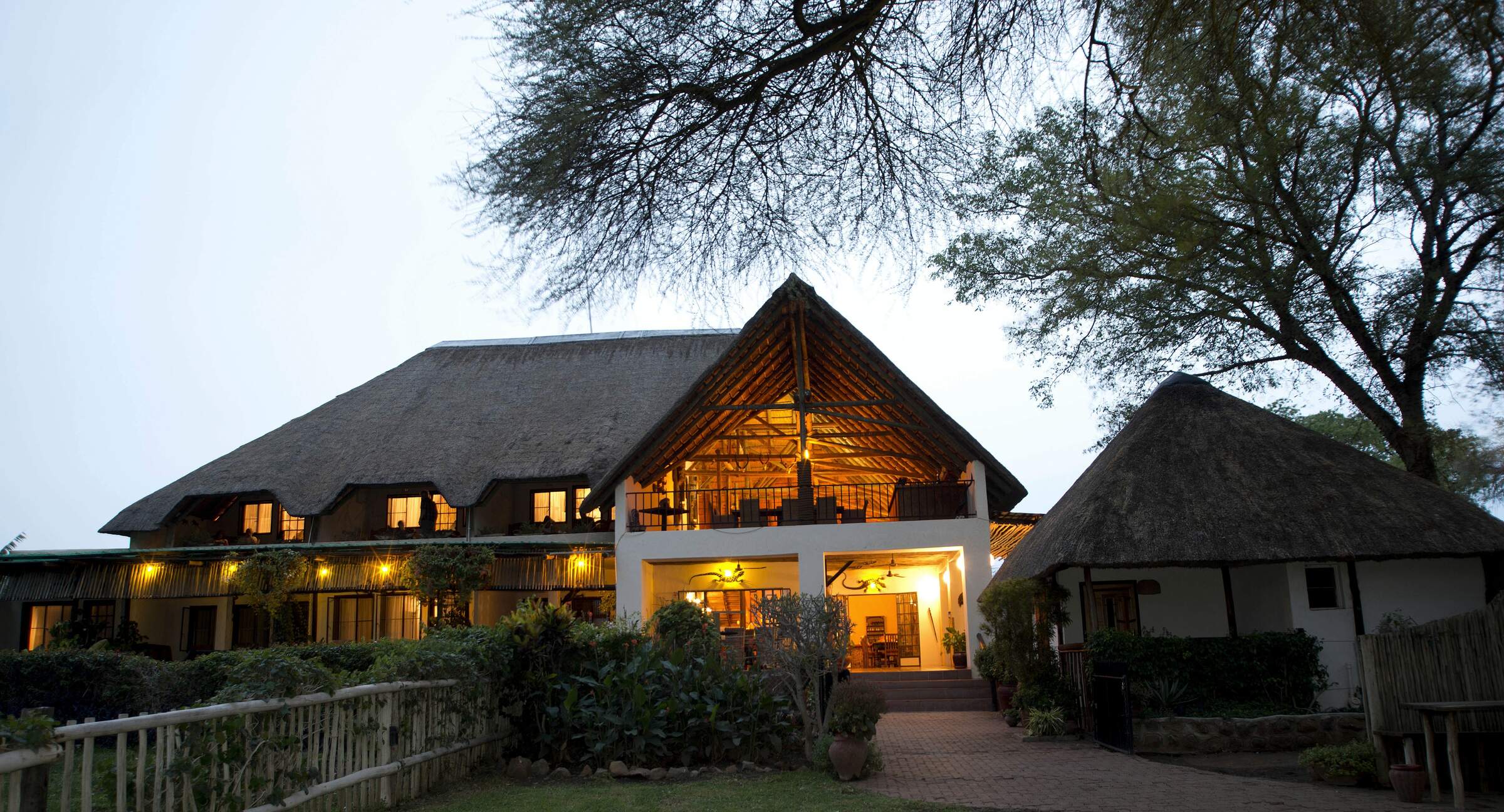
Chobe River Lodge
Overlooking the Chobe River, the intimate Chobe River Lodge is a haven of tranquillity away from the bustle of Kasane.
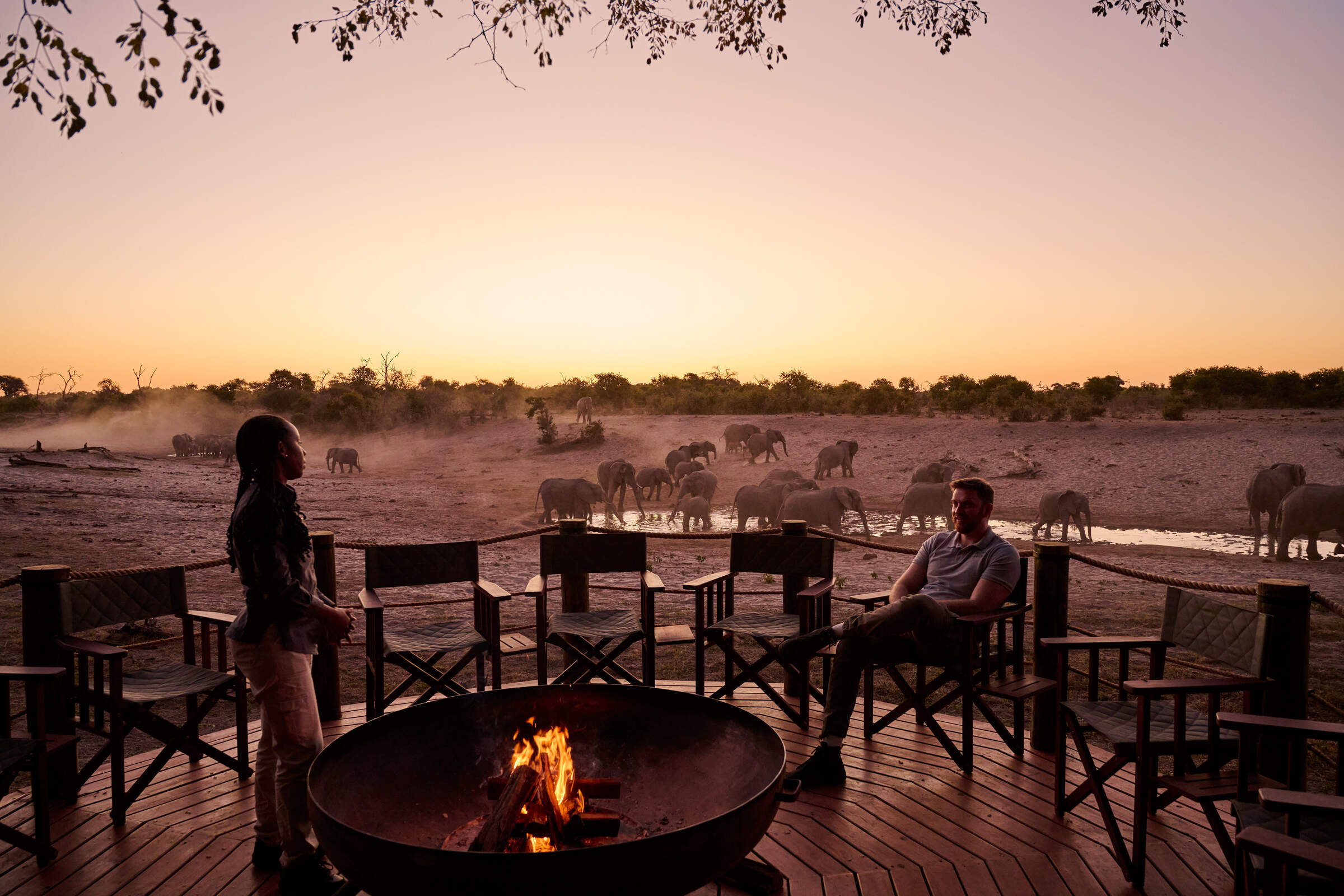
Savute Safari Lodge
Savute Safari Lodge sits on the banks of the Savuti Channel within Chobe National Park, and offers access to excellent game viewing, especially during the dry season.
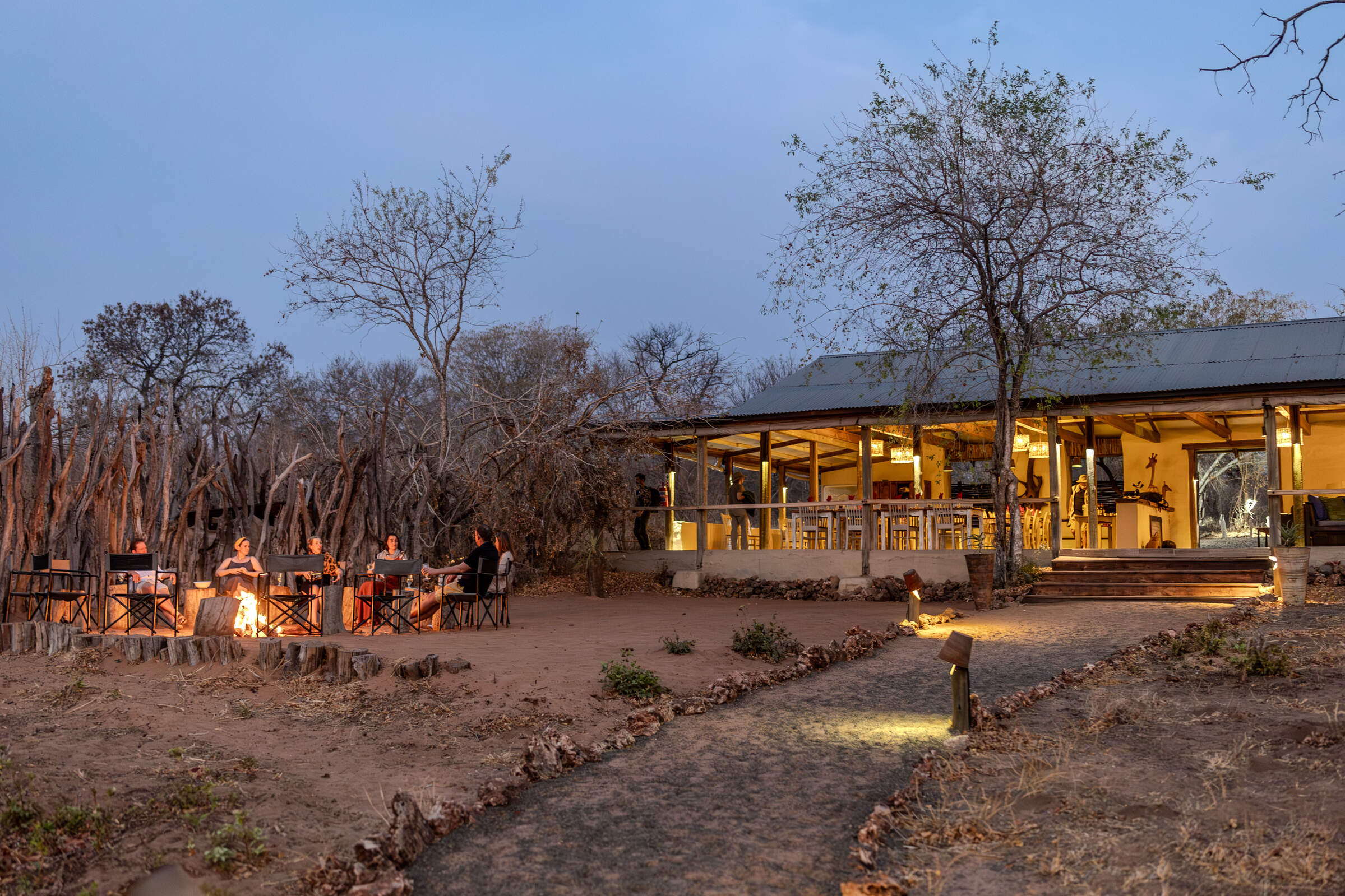
Chobe Elephant Camp
Located in one of our favorite areas of Chobe National Park, Chobe Elephant Camp is a simple but well-appointed camp with a strong bush feel.
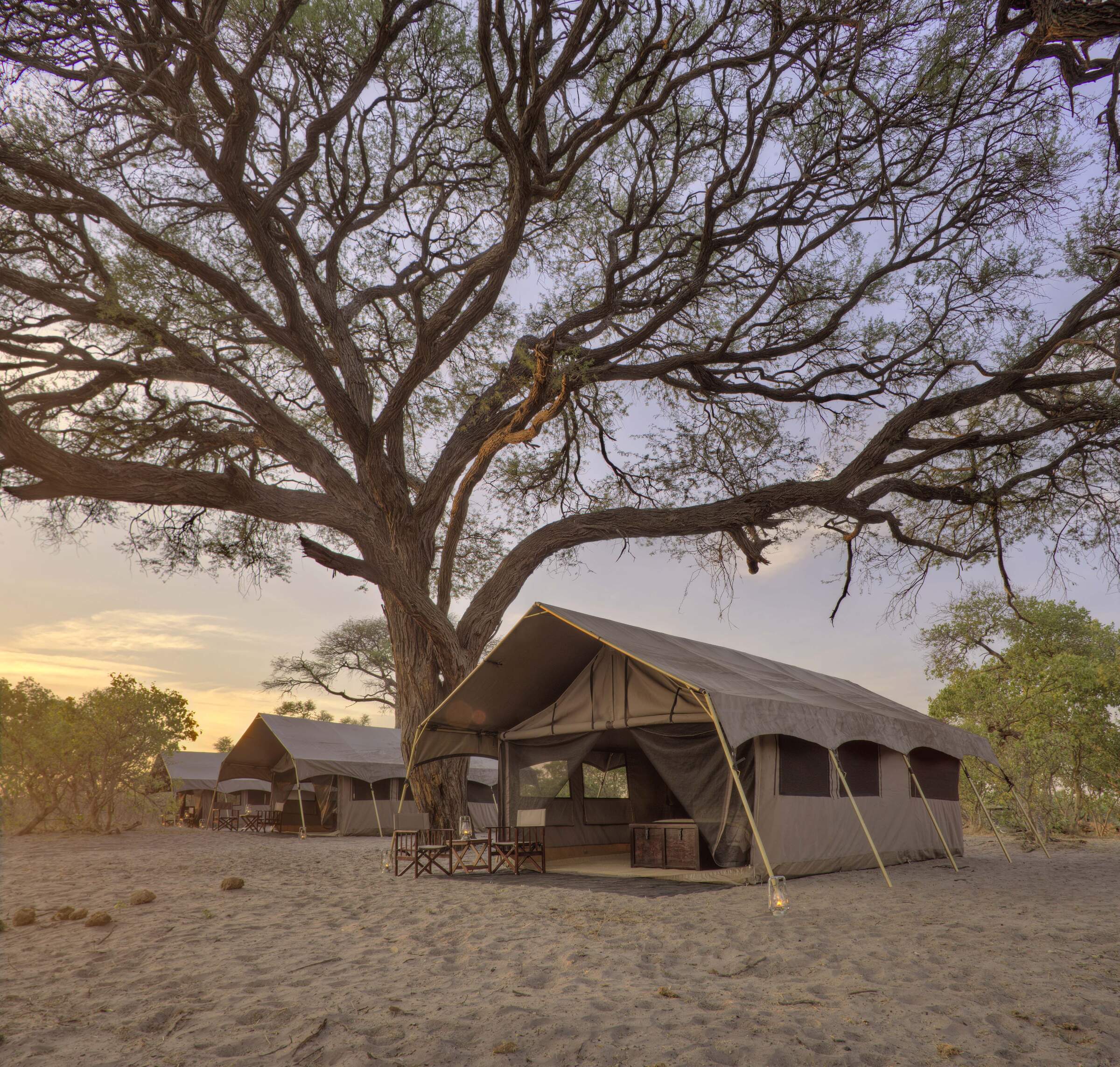
Savute Under Canvas
A mobile camp with the comforts of a semi-permanent tented camp, Savute Under Canvas offers guided game drives within the Savuti region of Chobe National Park.
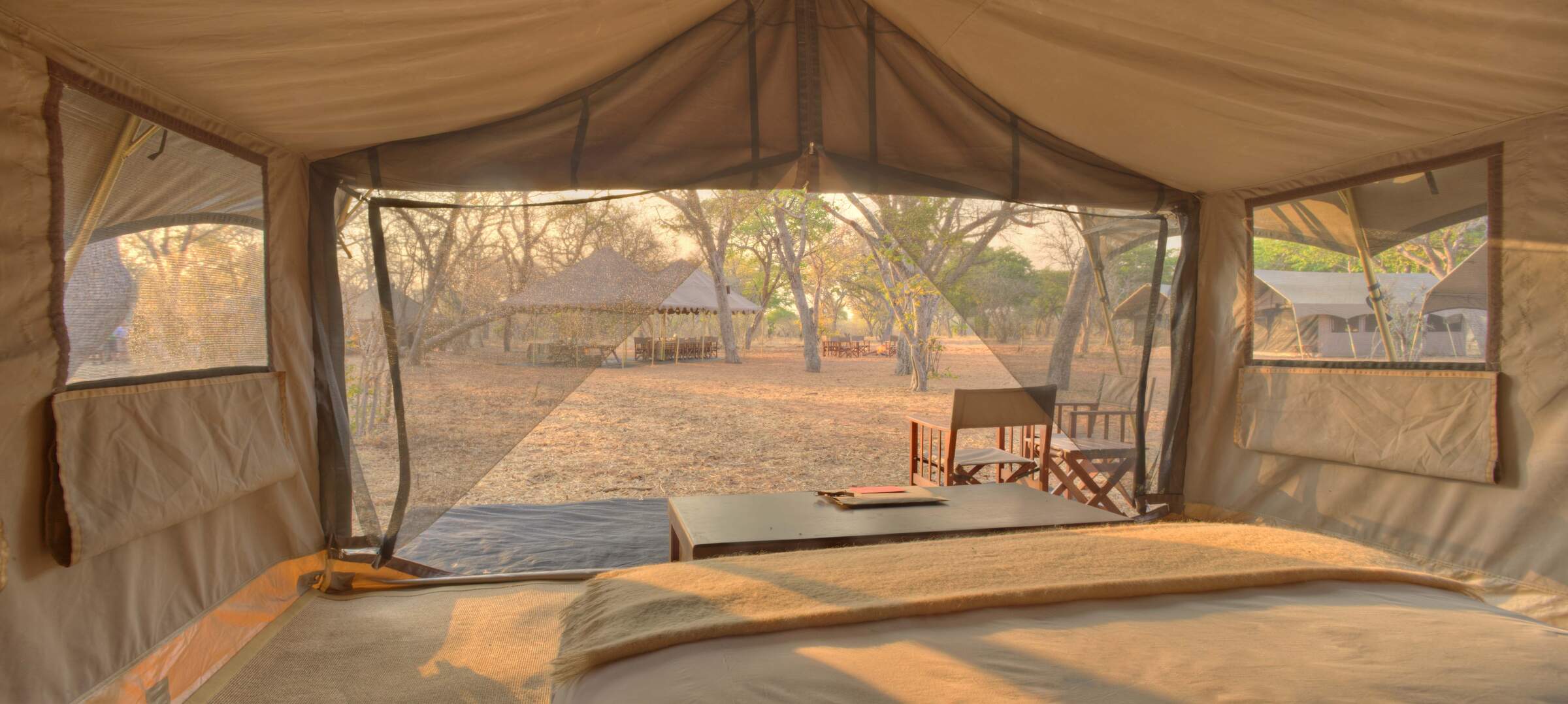
Chobe Under Canvas
This is a typical location for Chobe under Canvas, a small, semi-permanent camp in the Chobe Riverfront area that offers good value for money and high standards of care.
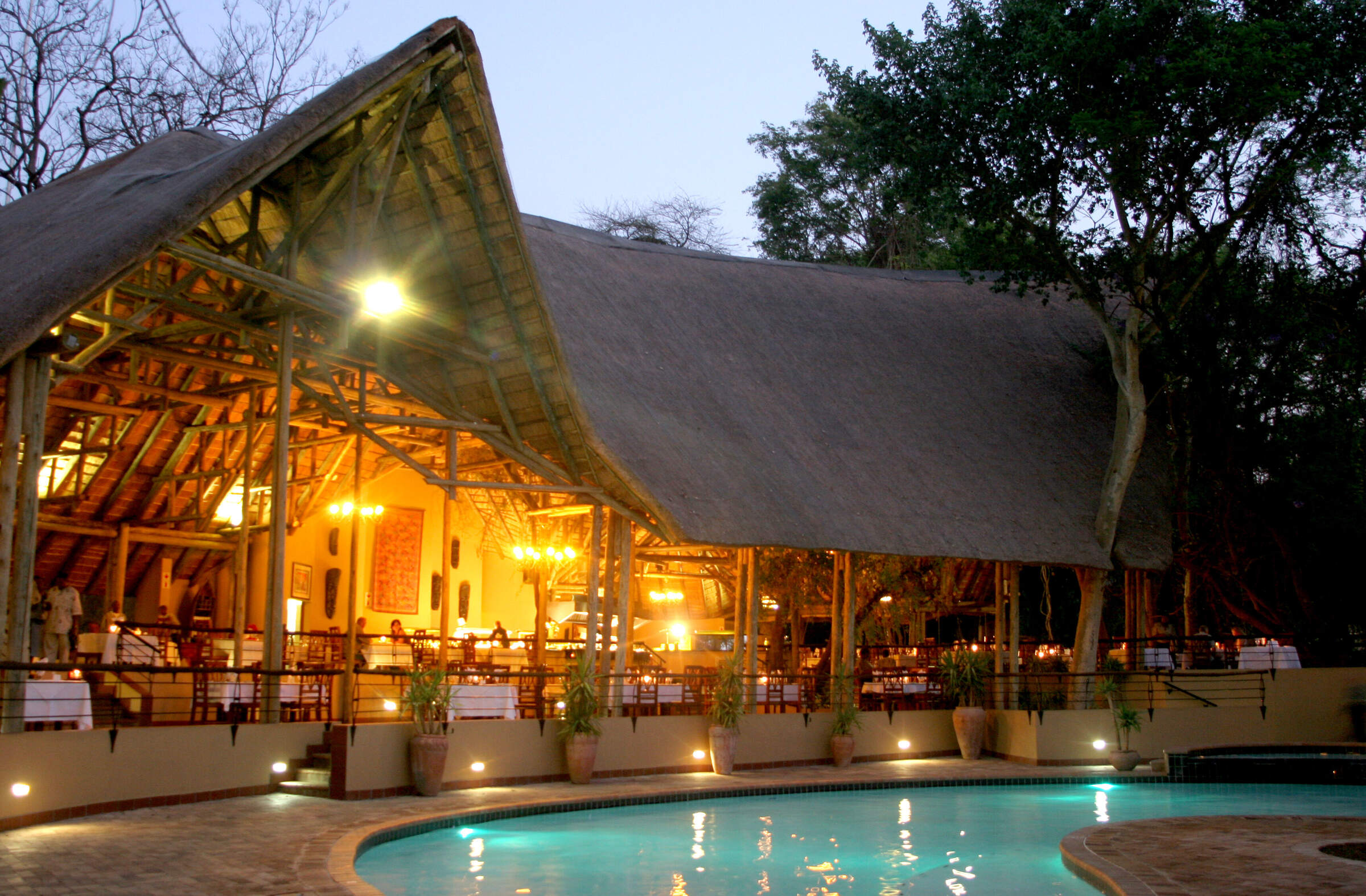
Chobe Safari Lodge
Chobe Safari Lodge is a good value, hotel-style lodge in the heart of Kasane offering game drives, boat cruises and fishing trips.
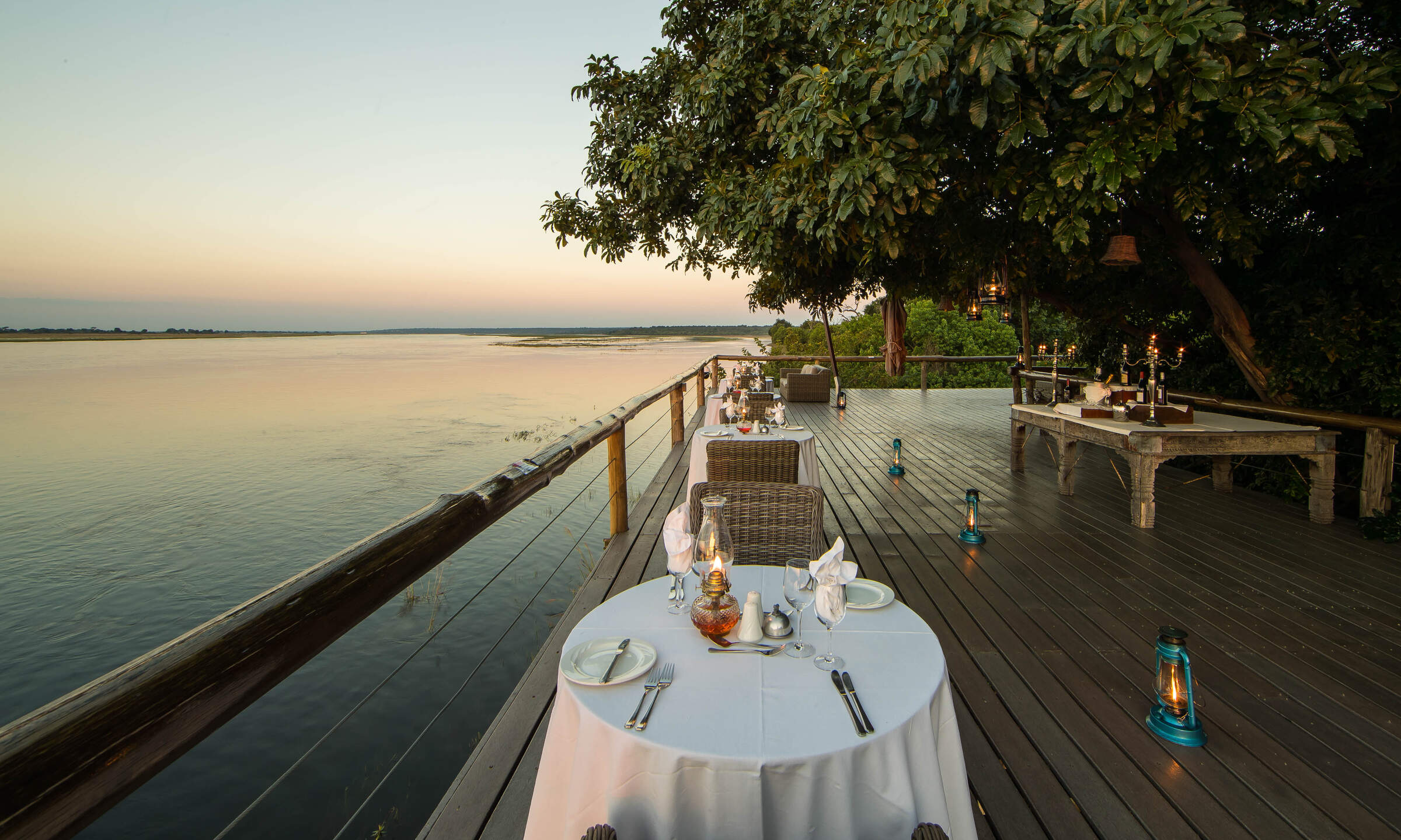
Chobe Game Lodge
Chobe Game Lodge occupies an enviable riverfront location within Chobe National Park and boasts well-earned 'eco' credentials, as well as an excellent all-female guiding team.
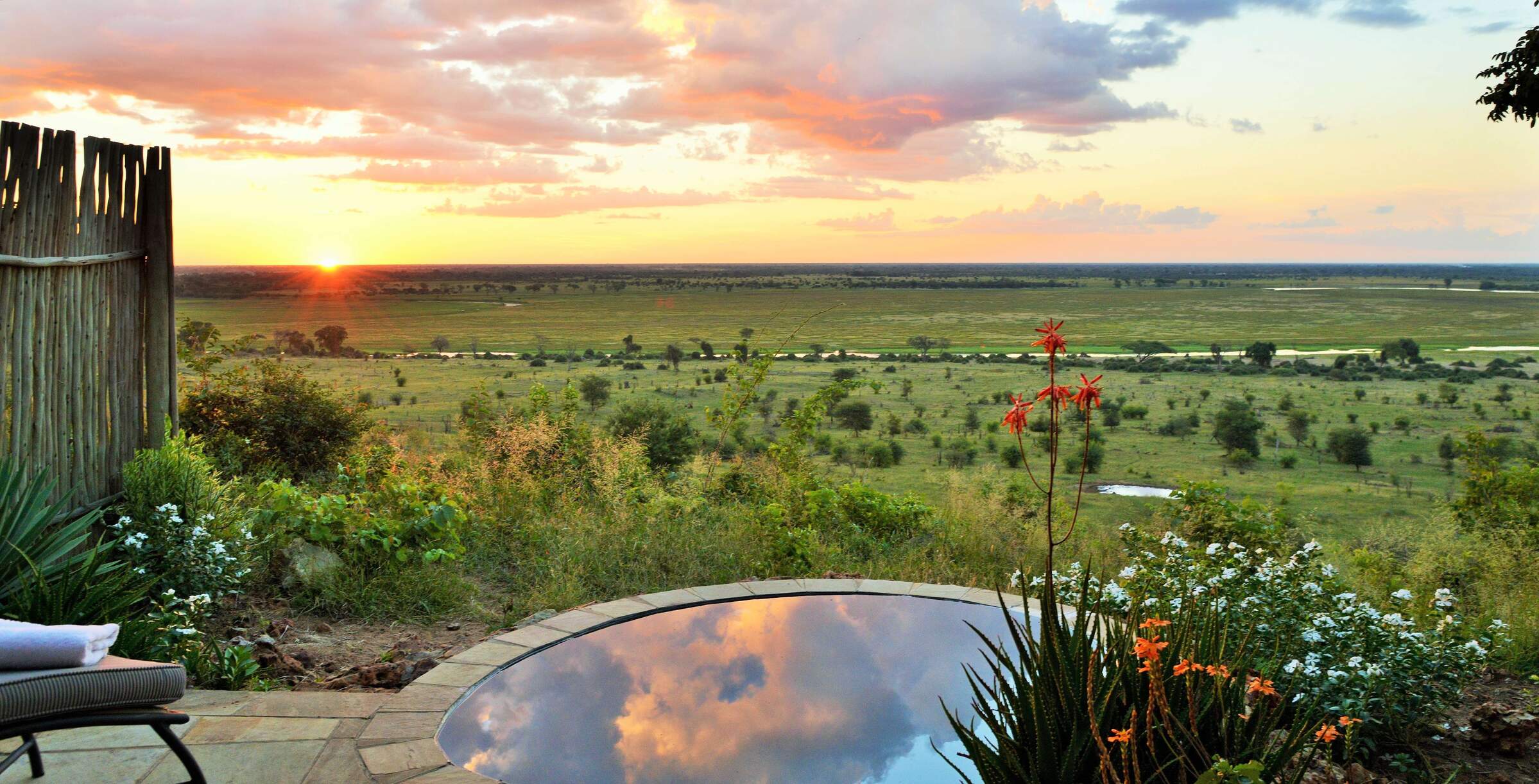
Ngoma Safari Lodge
With sweeping views across the floodplains of the Chobe River, Ngoma offers superb food and flexible safari activities.
Closed for refurbishment 5 Jan - 28 March 2026
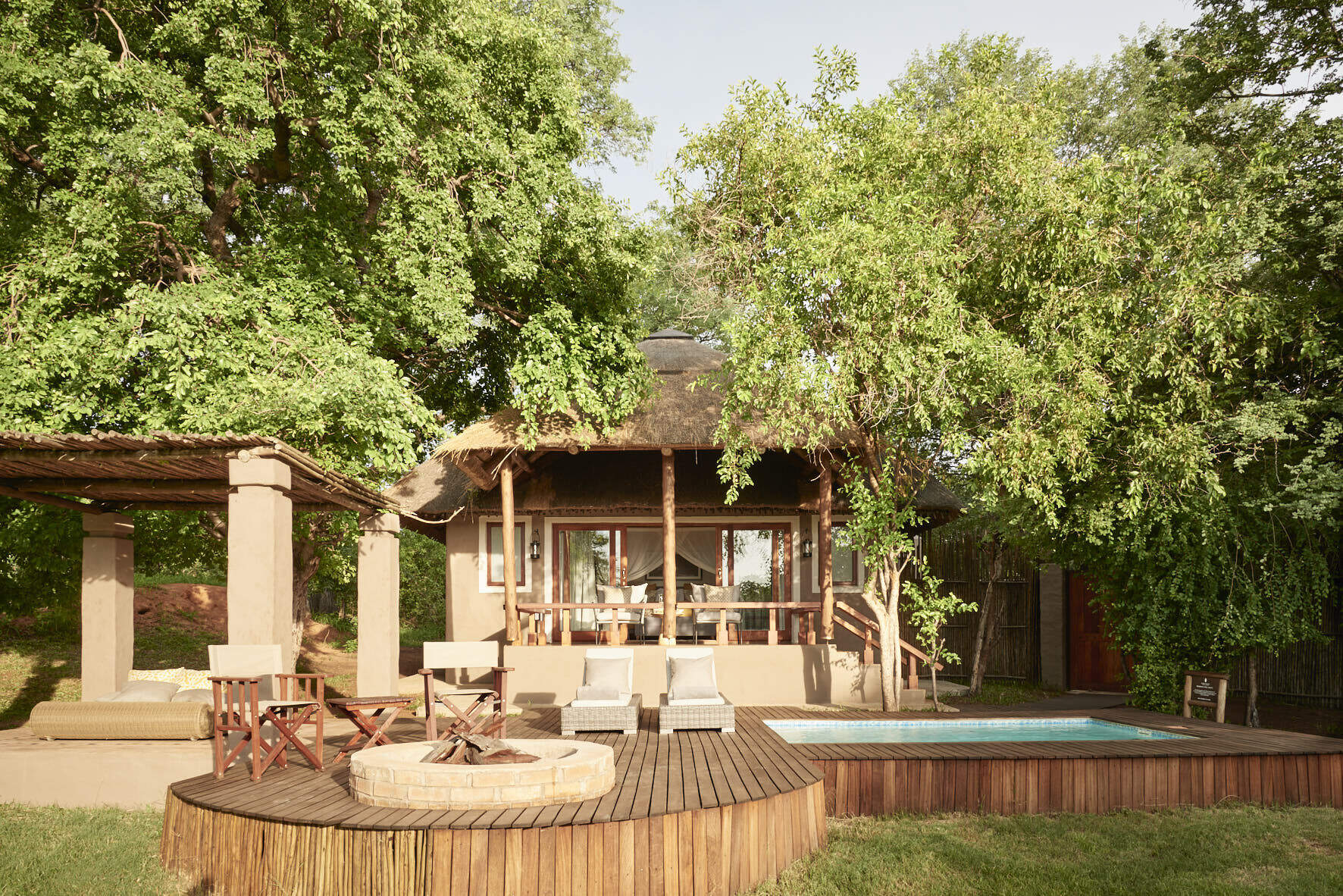
Chobe Chilwero
On the periphery of Chobe National Park, Chobe Chilwero offers luxurious surroundings and excellent food, which complement superb game viewing on game drives and boat trips.
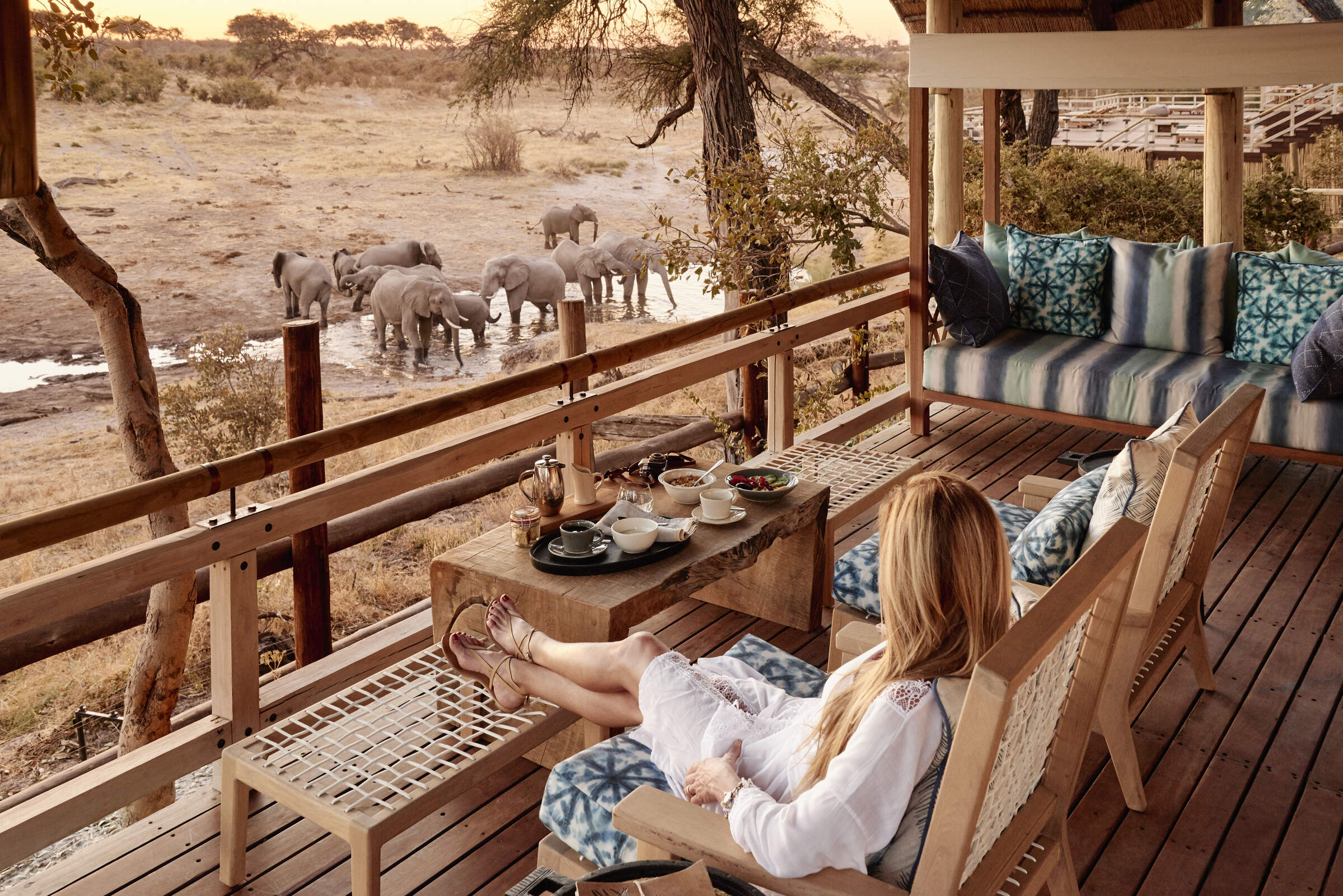
Savute Elephant Lodge
Savute Elephant Lodge is a luxurious camp on the banks of the now flowing Savuti Channel. This is a classic big-game area, although its location within Chobe National Park does limit the activities which are possible here.
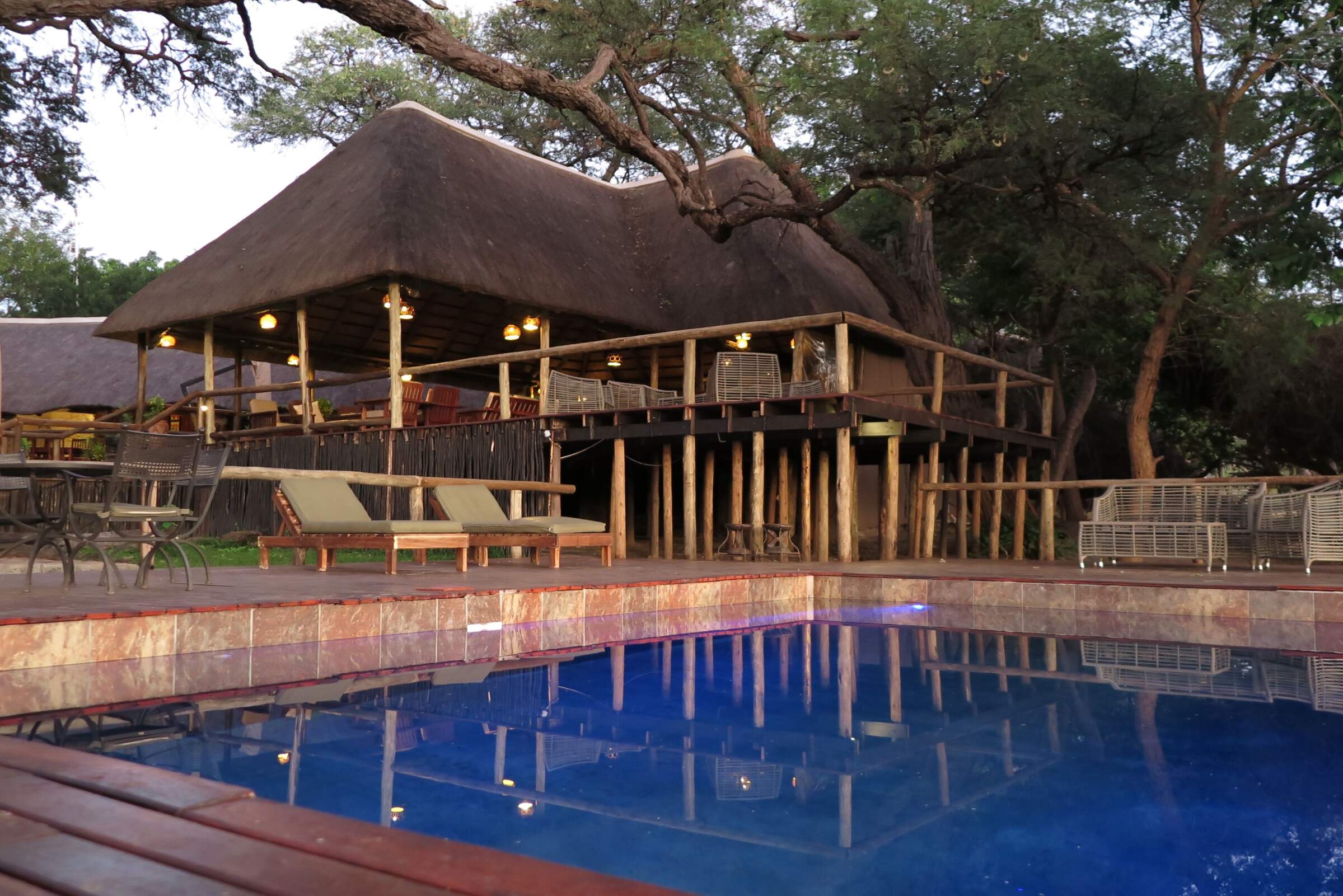
Elephant Valley Lodge
Elephant Valley Lodge is a lovely camp in a beautiful setting – sit in its hide and watch the wildlife come to drink at the waterhole. Activities focus on boating and drives in Chobe which - although very busy, and a long drive from the lodge – is very rich in wildlife.
When to go to Chobe National Park
Our month by month guide: What it's like to visit Camp Kuzuma in Chobe National Park
Jan
Feb
Mar
Apr
May
Jun
Jul
Aug
Sep
Oct
Nov
Dec
Chobe National Park in January
January marks the peak of the rainy season in Chobe National Park. Evening rains are typically brief but heavy, often accompanied by thunderstorms. While temperatures remain high, they are slightly cooler compared to earlier months. Wildlife tends to be more dispersed, making it harder to spot animals. Big game densities near the Chobe Riverfront are relatively low, but some resident species, like giraffes, are accustomed to vehicles and can appear so relaxed that they seem almost tame.
The Savuti Marsh becomes lush and green, attracting herbivores. Migratory birds abound throughout the park, with the Linyanti Marsh being particularly rich in birdlife during this period. January is an excellent time for visitors interested in lush landscapes and diverse birdlife. Lower rates at many lodges make this a good time to visit on a more moderate budget.
- Warm temperatures with occasional thunderstorms
- Birdlife at its most spectacular in Chobe
- Big game dispersed across the park
- Seek most wildlife away from the river
- Good availability and rates in Chobe’s lodges and camps
Our view
A good time to visit, with pros & cons
Weather in January
Chobe National Park in February
February in Chobe National Park is similar to January, with heavy rains most days, often towards evening. The landscape is green and alive, with insects and smaller animals more easily seen. Many birds and animals are raising their young, especially in the Linyanti and Savuti areas, making for lovely family group sightings. The Chobe River swells, creating a spectacular landscape and attracting diverse wildlife. However, the rains create pools and waterholes in the bush, which combined with thicker vegetation makes it harder to spot larger animals.
The Chobe Riverfront area still offers a good wildlife experience as although much big game has moved away, the animals that remain are often more relaxed. Boat cruises on the Chobe River provide excellent opportunities to observe wildlife from a different perspective. Visitor numbers remain low, with good rates and more availability in camps and lodges.
- Warm with occasional thunderstorms in Chobe
- Vegetation running riot; smaller wildlife thriving
- Many animals with young in the park
- Big game dispersed throughout Chobe
- Low visitor numbers, good camp availability
Our view
This is not a great time to visit
Weather in February
Chobe National Park in March
March typically marks the end of the main rainy season in Chobe National Park, with showers gradually tapering off. Many days are characterised by clear skies, intense sunshine, and rising temperatures. Short afternoon thunderstorms may still occur, while the park's landscape remains lush and vibrant. During this time, many birds and animals complete the process of raising their young. The Savuti Marsh area becomes particularly fascinating as predators exploit the vulnerability of the young and weaker prey.
The Chobe River levels start to stabilise, offering excellent boat safari opportunities. March can also be a good time to explore the Linyanti area, where many animals congregate as other water sources begin to dry up. With fewer visitors in most areas, rates are still be relatively low at lodges and safari camps.
- Variable weather, rains tailing off in Chobe
- Occasional small thunderstorms in the park
- Many animals finish raising young in Chobe
- Birdlife still spectacular along Chobe River
- Few tourists, often lower rates in lodges
Our view
A good time to visit, with pros & cons
Weather in March
Chobe National Park in April
During April, rains in Chobe National Park have usually stopped, though there may still be the odd afternoon downpour. This results in clear skies and a lovely green, lush landscape. Night-time temperatures start to drop, and are especially noticeable in the Savuti area. The Chobe Riverfront begins to flourish at this time, with the numbers of elephants and other wildlife gradually increasing along the river.
The Savuti region is a particular favourite during this time, with good predator-prey interactions on display. April marks the beginning of the shoulder season for many camps, so rates are on the rise but still relatively moderate. This is an excellent time for photographic safaris, as the air is clear and the landscape still green.
- Cooler evenings, occasional showers in Chobe
- Northern Chobe lush and green
- Good predator-prey interaction observable
- Savuti area best for wildlife viewing
- Popular shoulder season, relatively low rates
Our view
A good time to visit, with pros & cons
Weather in April
Chobe National Park in May
May is a very popular month to visit Chobe National Park, often the last month of the shoulder season before camp rates hit their peak. While there is very little chance of rain, the annual floods from Angola start to make their way through the northern part of the park. With cooler temperatures in the morning and evening, predator activity tends to be higher, especially in the Savuti and Linyanti areas.
The Chobe Riverfront becomes busier with wildlife as water dries up elsewhere, making it an excellent time for boat cruises on the Chobe River, where close encounters with elephants and other wildlife are a real treat. Away from the water, game drives in the park's interior become more rewarding as vegetation thins out and sightings improve. May is a favourite time for many visitors, and camp bookings throughout Chobe are start to be snapped up quickly.
- Cool mornings and evenings, little rain in Chobe
- Game viewing beginning to improve
- Predator activity increasing in Savuti
- Last month of shoulder season for most camps
- Availability decreases throughout Chobe
Our view
A very good time to visit
Weather in May
Chobe National Park in June
June marks the real start of the dry season in Chobe National Park. Temperatures are cool in the mornings and evenings, occasionally reaching freezing at night, and rising to 25-30°C/77-86°F during the day. This brings a certain clarity to the air and clear blue skies, making it a favourite month for serious photographers. Surface water and smaller natural waterholes are now drying up, leading wildlife to congregate around the remaining large water sources, including the Chobe River.
Visibility improves as the grass dies back, making game viewing very good throughout the park. The Savuti Channel and Linyanti areas see increased predator activity. June is an excellent time for both land and water-based safaris in Chobe, so not surprisingly, camp availability becomes scarce and rates climb.
- Warm days, cold nights in Chobe National Park
- Excellent conditions for wildlife photography
- Animals congregating at Chobe River
- Grasses dying back, improving visibility
- Peak season begins, rates increase
Our view
Fantastic: the very best time to visit
Weather in June
Chobe National Park in July
July in Chobe National Park offers cold evenings and mornings, combined with great daytime game viewing; this makes it one of the most popular times to visit. Vegetation is really thinning out, making game ever-easier to spot, with the few remaining waterholes attracting large congregations of wildlife species. The Chobe Riverfront is increasingly rewarding, with large herds of elephants and buffalo congregating along the river.
However, this area is now becoming busy with visitors. Game viewing is good in the Savuti area too, with frequent predator sightings. The Linyanti Marsh attracts diverse wildlife, including rare species like wild dogs. Camps are now very much into the peak season and tend to be full. Advance booking is essential for popular lodges and camps.
- Comfortable days, cold nights in Chobe
- Excellent game viewing as vegetation dies back
- Chobe Riverfront becomes busy with wildlife
- Private concessions offer exclusive experiences
- Peak season, higher rates in lodges
Our view
Fantastic: the very best time to visit
Weather in July
Chobe National Park in August
August is a favourite time for visiting Chobe National Park, as it aligns with the European and North American summer holidays. Camps tend to fill up quickly, so booking well in advance is essential. Daytime temperatures are pleasantly warm, perfect for outdoor activities; nights can be chilly, but the clear, cloudless skies also provide stunning opportunities for stargazing.
Wildlife is now congregating around the remaining water sources, especially along the Chobe River, making it a fantastic time for game viewing. If the Savuti Channel is flowing, it becomes a magnet for a variety of wildlife. This is one of the prime months to witness the park’s iconic large elephant herds. A boat cruise on the Chobe River offers up-close views of wildlife, including hippos and crocodiles.
With crystal-clear skies and animals congregating near water, August is an excellent time for photography safaris.
- Dry, warm days and cool nights in Chobe
- Spectacular stargazing opportunities
- Fantastic wildlife watching along Chobe River
- Large elephant herds visible at waterholes
- Peak season, high rates and limited availability
Our view
Fantastic: the very best time to visit
Weather in August
Chobe National Park in September
September is another very popular month to visit Chobe National Park. Days are warming up, while nights remain refreshingly cool. With drier conditions, most of the greenery has faded from the landscape, and photographers may find the haze from dust or smoke challenging, but it sets the stage for breathtaking sunsets.
Game viewing in September is exceptional, with large herds of elephants and buffalo gathering in the Chobe region. The Savuti and Linyanti areas also offer excellent predator sightings, and migratory birds begin to return, adding vibrant flashes of colour and adding to the park’s biodiversity.
Water-based activities on the Chobe River, such as boat cruises, are particularly rewarding, offering close-up views of animals coming to drink. Accommodation in camps and lodges is in high demand, with rates remaining at a premium, so early bookings are essential.
- Warmer days, cool nights in Chobe National Park
- One of the best months for wildlife viewing
- Large elephant and buffalo herds by Chobe River
- Hazy conditions create brilliant sunsets
- High season rates, many lodges and camps fully booked
Our view
Fantastic: the very best time to visit
Weather in September
Chobe National Park in October
October is typically the hottest and driest month in Chobe National Park. Towards the end of the month, the likelihood of rain increases, bringing a rise in humidity. The air is often dry and hazy, which can make photography more challenging, but the scarcity of water and vegetation leads to excellent opportunities for spotting big game. The Chobe Riverfront becomes a prime gathering spot for wildlife, particularly impressive herds of elephants.
In the Savuti area, predator-prey interactions are frequently observed around the remaining waterholes. Water levels are significantly lower by this time, meaning water-based activities like boating and fishing are limited to major tributaries. October is an ideal month for walking safaris, especially during the cooler morning hours. Despite the intense heat, it remains a prime time for wildlife enthusiasts eager to witness concentrated animal activity.
- Hot temperatures in Chobe, chance of late rain
- Excellent big game viewing opportunities
- Water activities limited as levels can be low
- Hazy conditions less ideal for photographers
- Final month of peak season in Chobe camps
Our view
Fantastic: the very best time to visit
Weather in October
Chobe National Park in November
November typically signals the end of the dry season in Chobe National Park. Rising temperatures bring increased humidity, leading to the arrival of the first rains. These showers are often brief but heavy, occurring in the late afternoon or at night, and can be quite dramatic. The rains provide a welcome relief, slightly cooling the temperatures and transforming the parched landscapes into vibrant shades of green.
As waterholes begin to replenish, wildlife starts to disperse across the park. Birdwatching is particularly rewarding this month, with the arrival of many migratory species, especially in the Linyanti Marsh area. The first half of November is a favourite among travellers, offering exceptional game viewing at more reasonable rates as Chobe enters its shoulder season.
- Hot days, increasing humidity in Chobe
- Heavy showers more likely as month progresses
- Wildlife watching good but less predictable
- Migrant birds arrive in Chobe National Park
- Shoulder season brings mid-range lodge rates
Our view
A good time to visit, with pros & cons
Weather in November
Chobe National Park in December
By December, the rains in Chobe National Park are underway, providing relief from the intense heat. While game viewing becomes more challenging as animals spread out, excellent sightings can still be enjoyed along the Chobe Riverfront and in the Savuti Marsh. The rains bring a vibrant transformation to the landscape, with fresh greenery creating beautiful scenery. This is also a fantastic time for bird enthusiasts, as numerous migratory species make their presence known.
The Linyanti area becomes especially lush, drawing a variety of wildlife. December is ideal for those eager to see newborn animals, as many species give birth during this time. Boat cruises on the Chobe River offer a refreshing way to observe wildlife and enjoy the scenery. With low-season rates at many camps, December is an appealing option for budget-conscious travellers looking to experience the park’s beauty.
- Temperatures falling from October-November highs
- High chance of rain in Chobe National Park
- Wildlife more dispersed across the park
- Game viewing more challenging but rewarding
- Typically low-season rates in Chobe camps
Our view
A good time to visit, with pros & cons
Weather in December

Looking for inspiration on where to travel next?
Visit our trip chooser to explore your options and find inspiration for your perfect African adventure
Inspire me